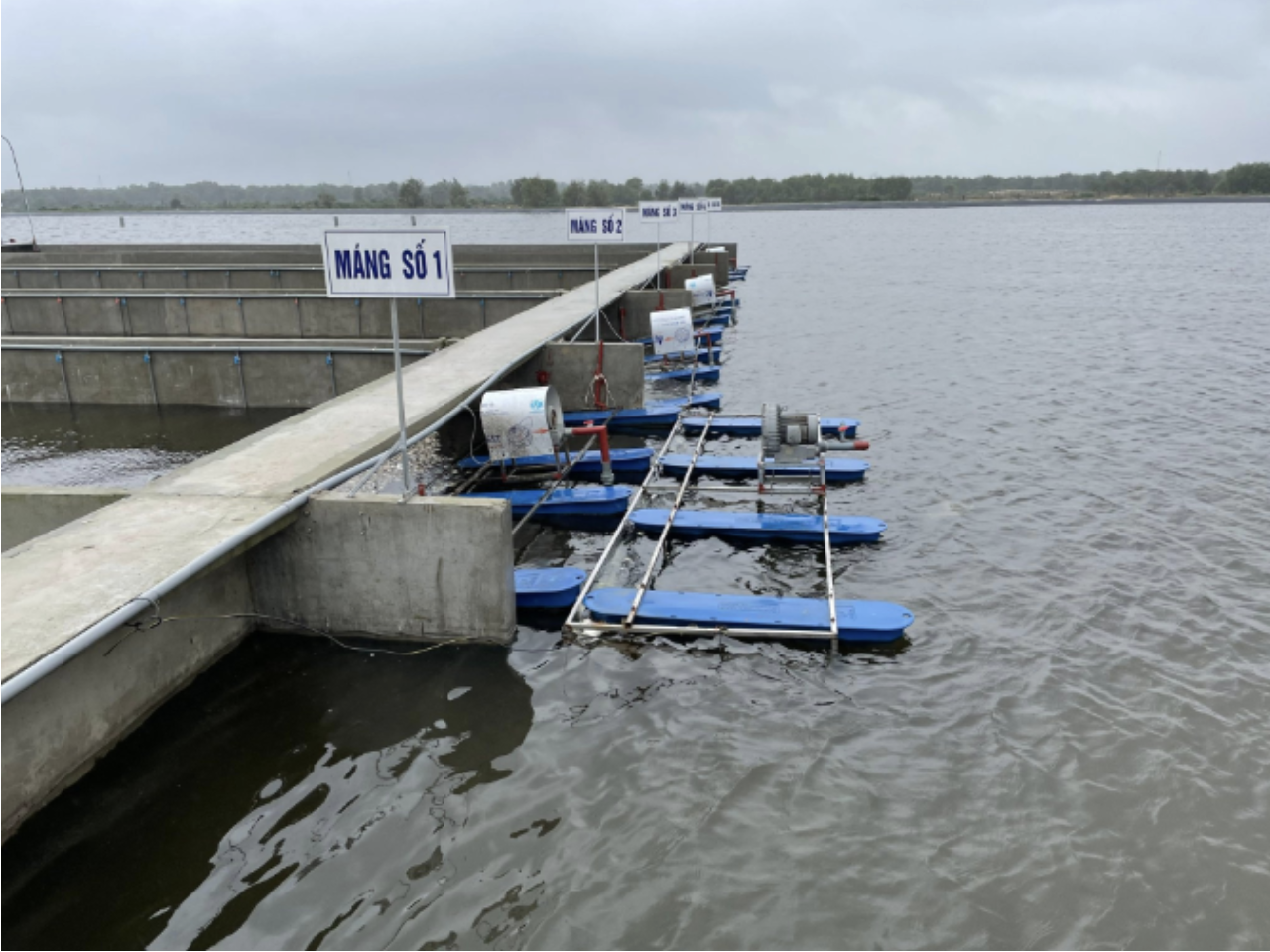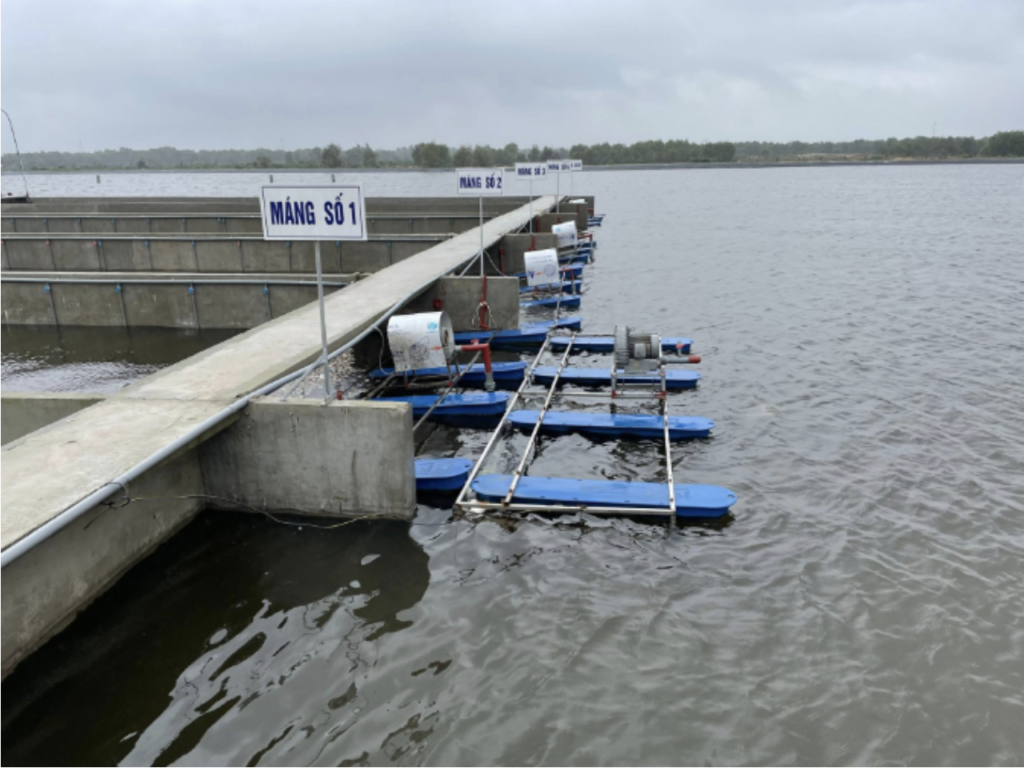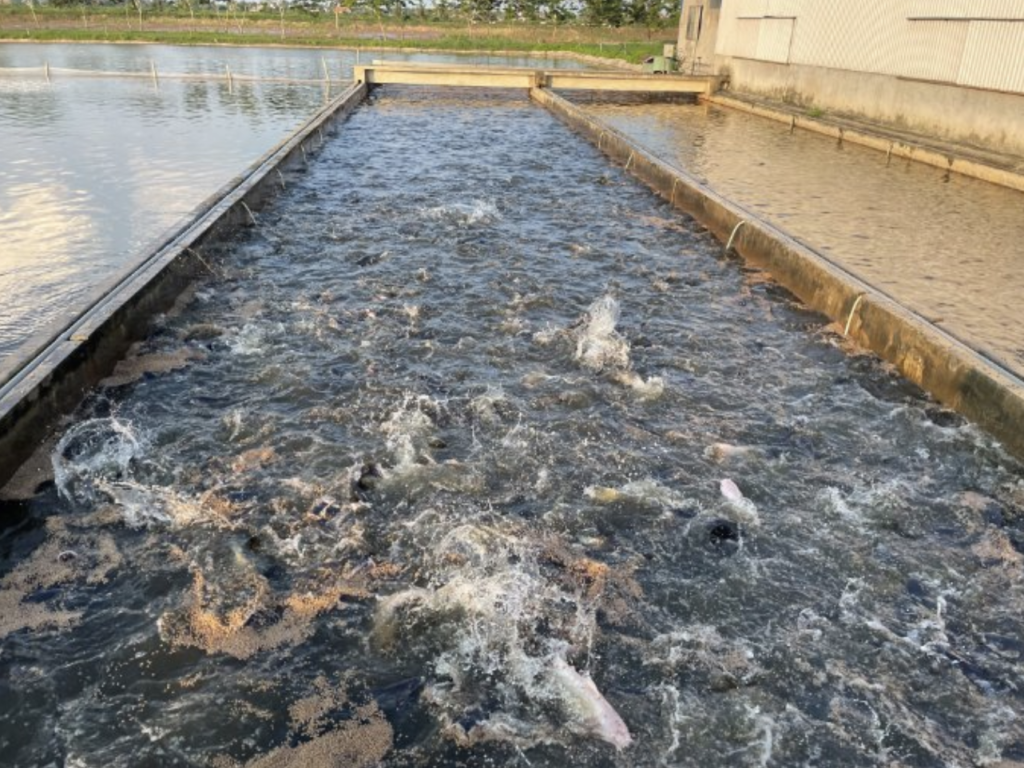Vietnam Aquaculture Embraces USSEC’s In-Pond Raceway System Technology
- Category:
- Aquaculture
- Event followup

The Southeast Asia (SEA) aquaculture industry is one of the key players in the world, with advantages of proper climate for year-round fish production and nearby China as the biggest food consumption market of the globe. While the industry has already experienced much growth, there is potential for additional expansion in the future. How do aquaculture producers evolve to increase production and meet growing demands? Through increased knowledge and integration of technology. In Vietnam, growers are choosing USSEC’s IPRS technology.
IPRS is an innovative intensive pond aquaculture technology that uses “raceways”, or fish production cells within a pond. This technology is primarily implemented in freshwater fish aquaculture production but can be applied to marine fish aquaculture in salt or brackish water environments with a few modifications to materials and coatings to combat corrosion. For example, a feeding trial funded by the soybean checkoff in 2019 showed that sea bass cultured in a marine IPRS system and fed a soy-optimized diet exceeding 31% soy derived from U.S. soybean grew well and achieved a feed conversion ratio of 1.8.
More than 300 IPRS cells are currently operating in Vietnam, with marine operations making up three farms, or about nine cells. IPRS is classified as a “super intensive” aquaculture production system – a production technology that allows for higher production density and greater yields with less environmental impact compared to other production systems.

This “super-intensive” system uses a high level of water aeration, mixing and circulation. An important aspect of IPRS is that solid wastes and dissolved nutrients are extracted from the system to allow for greater production over the long term without the need to drain and refill the pond water. The collected solid waste may be used as fertilizer for aquaponics or row crops, serving as an additional income stream.
When comparing super-intensive aquaculture technologies, IPRS is at the top of its class.
IPRS allows aquaculture producers to increase fish production while significantly reducing environmental impact and optimizing operating cost. IPRS is up to three times more productive than a pond of the same water volume without this technology. The concept is to concentrate fish and provide them with constant water circulation, with corresponding improvements in fish management such as feeding, treatment and harvest. IPRS is an innovative combination of existing tools and aquaculture principles for more efficient and sustainable fish production.
Most IPRS operations contain at least three raceways, and this allows a staggered stocking and harvest scheme, which benefits cashflow of the aquaculture operation as harvests occur on a staggered schedule as well. One of aquaculture’s strengths is that it can provide predictable harvests for targeting markets, and IPRS fulfills this objective.
The continued adoption of this innovative system has the potential to increase aquaculture production in Vietnam, though with an increase in the adoption of technology comes an increased need for knowledge of the system and how it works.

USSEC recently released an IPRS Manual, partially funded by United Soybean Board, to guide seafood and aquaculture companies to access this best-in-class approach to freshwater fish aquaculture production. While a marine IPRS manual is also on the horizon to provide technical specifications for state-of-the-art marine IPRS, there is room for continued education for both freshwater and marine producers.
“While the IPRS has standard construction specifications, it can still be adapted to support local conditions for operation,” said Hsiang Pin LAN (Sean), USSEC Marine Aquaculture Specialist. “This adaptation would require the IPRS operators to fully understand the system and principles in order to build and operate it efficiently. Knowledge of the technology is key.”
Aquaculture stakeholders in Vietnam seek continued education through USSEC trainings hosted throughout the year. The latest webinar, hosted January 2022, provided insight on IPRS construction, growing tilapia in brackish water using IPRS and IPRS applications throughout SEA. An upcoming trip by Dr.Jesse Chappell, the “father” of IPRS, to the region will work to continue the adoption of this technology in Vietnam and throughout SEA.
In addition to trainings, those interested can explore the latest about IPRS at ussec.org.
- Partially funded by U.S. soybean farmers, their checkoff and the soy value chain.